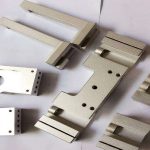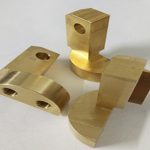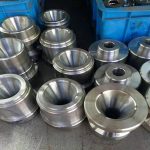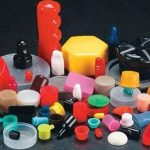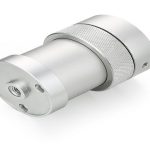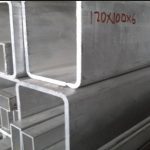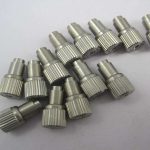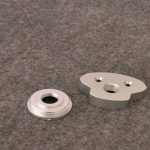The welding process is a very important step in various manufacturing processes. Weld all different types of metals for many different types of manufacturing. However, in order for any welding process to be accurate and effective at the first time, the parent material must be properly prepared.
Material preparation is so critical that it is often recorded to ensure the consistency of the procedure, regardless of the material. Removal of coatings such as paint, oil, grease and rust (oxide) ensures that the area to be welded is in the best condition.
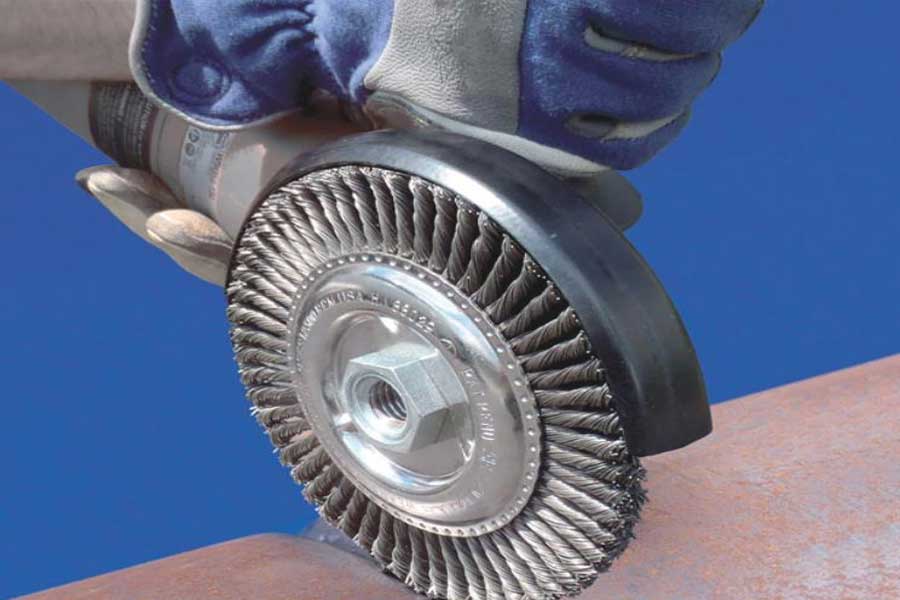
When using carbon steel, it is essential to remove all rust and other impurities, such as mill scale. Before welding, oil-based paint and pickling chemicals must also be removed. The removal of chromium oxide to produce a decorative finish on stainless steel alloys is usually achieved through a direct process. But then cleaning the welding area to remove any surface oxides (usually seen as discoloration next to the weld) can re-form the protective layer, which is very important for stabilizing the stainless steel alloy. This stabilization is called passivation.
Non-ferrous metal materials face their own challenges in the process of welding seam preparation. For metals (such as aluminum and titanium), the time between surface cleaning and welding is shorter because oxidation will form quickly. Cleaning large areas too early before welding often results in the need for rework.
Tips for manual and mechanical cleaning
When using stainless steel or non-ferrous metal brushes to clean welds, please run at a very slow speed, that is, between 1,250 to 4,250 surface feet per minute (SFPM).
Stringer type beads, including variants with reversible double nut features or variants with alternating twisted knot structures, will provide effective, uniform cleaning and excellent operator control to clean carbon steel fillets between welding passes .
You can use bonded and coated abrasive products to control surface markings. The thickness of the thin cutting wheel is between 0.030 and 0.045 inches, and special bonding and grain types are available, specifically for aluminum, stainless steel and carbon steel. They can provide fast cutting, long life, low friction and minimal burrs on the material being cut. The specially designed flap wheel adds sizing performance to the coating material, reduces the heat accumulation on the material with poor thermal conductivity (such as stainless steel), and provides a very high cutting rate.
The speed of operation is another key factor for proper weld preparation and cleaning. A good rule of thumb to keep in mind when preparing surfaces for soldering is “Slower is usually faster”. Using low speeds to control friction helps reduce contamination of the surface and welding area. Higher surface contact speeds will produce excessive vibration, which can cause abrasives or brush heads to skip the surface and leave impurities. The fast operating speed will also reduce your ability to control the tool.
Reducing the speed by at least 10% can improve surface preparation efficiency and extend the service life of wearing parts, making the welding preparation process more cost-effective. Variable speed power tools can help you fine-tune the operating speed. Although these power tools often require more upfront investment, when you consider operator fatigue and wearing part performance, they usually end up paying for themselves.
For non-ferrous metal materials, the use of non-woven abrasive products (such as surface treatment or surface polishing discs) may cause problems, because these products are usually made of loose nylon filaments impregnated with abrasive particles, which are easy to melt and “smear” when operating at high temperatures speed. This will not only affect the efficiency of the abrasive due to uneven surfaces, but also leave nylon residues on the workpiece. These residues will affect the integrity of the weld and require rework.
To avoid other types of surface contamination and abrasive loading or clogging, please only use products designated for aluminum and other non-ferrous materials.
When working in confined areas, a hand brush may be your best tool. Specially designed brushes (such as V-groove scraping brushes) have three rows of angled lines, which form a very narrow brush surface, allowing you to concentrate and enter those narrow areas. Another benefit of this full-size brush is that you can better control it when wearing gloves.
General best practices
In order to obtain the best overall performance of any product used to prepare the surface for welding, it is very important to calculate and control the speed and friction applied to the surface. The best option is to consult the manufacturer’s recommendations to obtain the maximum RPM based on the material and the size of the disc to safely use the consumables.
Avoid removing too much base material or creating deep scratches around the welding area. Removing too much material (also known as undercutting) can cause inclusions or poor arc control during the welding process. This is a serious problem if you are using materials that have undergone plasma cutting or cutting torch cutting. Usually, a chisel is used to remove excess plasma dross or slag, or a very coarse abrasive is used to grind it away. This will leave deep marks on the workpiece and drive surface impurities deep into the material to be welded, thereby increasing the possibility of weld porosity or poor coating adhesion later in the manufacturing process. Any of these errors can lead to expensive rework.
In addition, please avoid cross-contamination caused by the use of new clean abrasive products. Pollution can occur directly or indirectly. As long as the consumables of iron and non-ferrous materials are separated and organized, direct contamination can be prevented, such as using wire brushes on aluminum parts.
The real challenge is to prevent indirect pollution, which may be caused by airborne dust from other manufacturing processes in the same factory. The use of any abrasive products will produce dust, which can easily spread throughout the workshop. A cost-effective solution is to store new abrasive products in transparent plastic bags to maintain visibility and prevent dust from entering. You should also replace hard materials on the work surface, such as cardboard (beware of potential fire hazards).
Link to this article: What should be paid attention to in material preparation before welding?
Reprint Statement: If there are no special instructions, all articles on this site are original. Please indicate the source for reprinting:https://www.cncmachiningptj.com/,thanks!
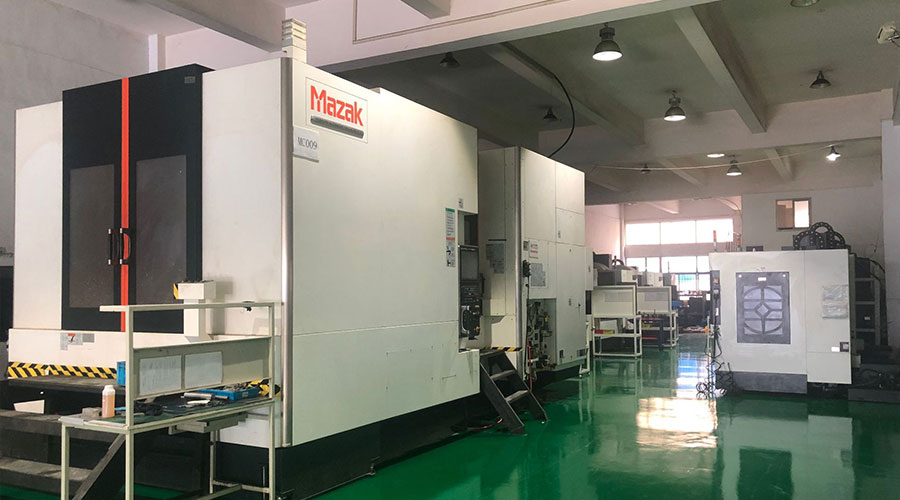 3, 4 and 5-axis precision CNC machining services for aluminum machining, beryllium, carbon steel, magnesium, titanium machining, Inconel, platinum, superalloy, acetal, polycarbonate, fiberglass, graphite and wood. Capable of machining parts up to 98 in. turning dia. and +/-0.001 in. straightness tolerance. Processes include milling, turning, drilling, boring, threading, tapping, forming, knurling, counterboring, countersinking, reaming and laser cutting. Secondary services such as assembly, centerless grinding, heat treating, plating and welding. Prototype and low to high volume production offered with maximum 50,000 units. Suitable for fluid power, pneumatics, hydraulics and valve applications. Serves the aerospace, aircraft, military, medical and defense industries.PTJ will strategize with you to provide the most cost-effective services to help you reach your target,Welcome to Contact us ( [email protected] ) directly for your new project.
3, 4 and 5-axis precision CNC machining services for aluminum machining, beryllium, carbon steel, magnesium, titanium machining, Inconel, platinum, superalloy, acetal, polycarbonate, fiberglass, graphite and wood. Capable of machining parts up to 98 in. turning dia. and +/-0.001 in. straightness tolerance. Processes include milling, turning, drilling, boring, threading, tapping, forming, knurling, counterboring, countersinking, reaming and laser cutting. Secondary services such as assembly, centerless grinding, heat treating, plating and welding. Prototype and low to high volume production offered with maximum 50,000 units. Suitable for fluid power, pneumatics, hydraulics and valve applications. Serves the aerospace, aircraft, military, medical and defense industries.PTJ will strategize with you to provide the most cost-effective services to help you reach your target,Welcome to Contact us ( [email protected] ) directly for your new project.
Link to this article:What should be paid attention to in material preparation before welding?
Reprint Statement: If there are no special instructions, all articles on this site are original. Please indicate the source for reprinting:Tungusten,Thanks!^^

